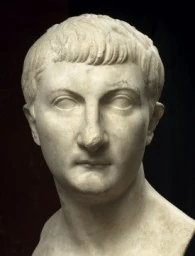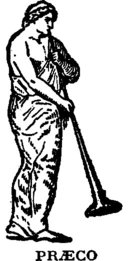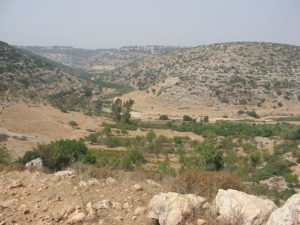King Herod’s Death Date
History
Nativity accounts of both Matthew and Luke report that Jesus of Nazareth was born during the lifetimes of three historical personages – Augustus, Herod and Quirinius.[1] King Herod’s death occurred shortly after the birth of Jesus of Nazareth making it the lynch pin date to determine his birth year, but it isn’t easy to determine.
Standardized calendars during Antiquity do not exist; instead, timelines and dates are linked to well-known historical events. Establishing the date of Herod’s death requires piecing together such clues as the reigns of Tiberius, King Herod and his sons; the Battle of Actium; the Jewish religious calendar; astronomy data, Josephus’ history accounts, etc.
Adding another level of complexity is “inclusive reckoning,” the question of whether a partial year was counted as a full year in historical references. The unsettled question instills a plus or minus factor of at least a year.[2]
Josephus wrote extensively in Antiquities of the Jews about the days surrounding Herod’s death. They are marked by bookend events of a lunar eclipse and the following Passover that Spring.
Calculations

Philip, one of King Herod’s sons, began reigning part of Judea after the death of his father when he was appointed by Caesar Augustus as tetrarch. Printed copies of Antiquities say Philip died in the “twentieth year of Tiberius,” after ruling for 37 years.[3]
“…Philip, Herod’s brother, departed this life, in the twentieth year of the reign of Tiberius after he had been tetrarch of Trachonitis, and Gaulonitis, and of the nation of Bataneana also thirty-seven years.” – Josephus (*printed)[4]
Tiberius began his reign when Caesar Augustus died in 14 AD, then adding 20 years it lands in 34 AD, minus Philip’s reign of 37 years calculates to 3 BC when King Herod died. With the partial lunar eclipse on March 13th, 4 BC, that year becomes the commonly accepted secular date for Herod’s death meaning Jesus of Nazareth had to be born in an earlier year.[5]
Secular history ends the reign of Tiberius in March, 37 AD, after almost 22 and half years when he began his reign in August, 14 AD. After factoring in the 37-year reign of Philip, he could not have began his reign in 4 BC.
Consultant and Biblical hobbyist, David Beyer, compared the 1544 Gutenberg printings of Antiquities to two dozen older, handwritten manuscripts predating Gutenberg. He discovered all older handwritten Antiquities manuscripts said that Philip died in the 22nd year of Tiberius, not the 20th year, and when corrected to 22 years places Herod’s death in the 1 BC time frame.[6]
Josephus’ two other references in Antiquities of the Jews and Wars of the Jews each back-up Beyer. In Antiquities, Josephus states that Tiberius died after serving as Caesar “twenty-two years, five months and three days” aligning with the secular history date of early 37 AD this placing Herod’s death in the 1 BC.[7]
Wars marked the Battle of Actium in the 7th year of Herod’s reign academically recognized as occurring in the year 31 BC. Josephus wrote that Herod served for 37 years backdating the beginning of Herod’s reign to 38 BC who then reigned himself for 37 years thereby again reckoning Herod’s death in the year 1 BC.
Agrippa, in 36 AD, traveled to Rome before the death of Tiberius. After saying to Caligula (Caius/Gaius) in a carriage ride that he wished Tiberius would die. The carriage driver told Tiberius who had Agrippa thrown into prison.
Six months later after the death of Tiberius, his successor, Caligula, gave the unfilled tetrarchy of Philip to Agrippa in 37 AD. Once again, factoring in the reign of Tiberius and backdating Philip’s death after reigning for 37 years, reckons to Herod’s death in 1 BC.[8]
Three historical references by Josephus are calculated three different ways. All land in the year 1 BC.
Historian expert Gerard Gertoux, using several calculations methods, arrived at similar results. Approaching the dilemma from several angles, Gertoux determined the King’s death occurred in 1 BC.[9]
Astronomy
Changing the date of Herod’s death to 1 BC poses a second question – what about the lunar eclipse referenced by Josephus marking the final days of King Herod?
NASA lunar eclipse data for Jerusalem reveals that on January 9-10, 1 BC, a full lunar eclipse occurred. Passover that year was observed on April 6th, twelve and half weeks later allowing eight additional weeks for the events described by Josephus to occur.[10]
By comparison, NASA data for Jerusalem shows only a partial, less-than-half, lunar eclipse occurred on March 13th, 4 BC, used to support the secular 4 BC timeline.[11] Passover in 4 BC fell on April 10th, four weeks later.[12]
Span of Eclipse to Passover Events
Aside from various dating methods, some experts question the timeline between the eclipse and Passover. Could all the events described by Josephus have occurred in the span of just 4 weeks if Herod died in 4 BC?
Josephus described in detail the events that took place between the eclipse and the upcoming Passover.[13] A gripping scene in Jerusalem began with rumors that Herod had died inciting insurrectionists to remove the long-hated sacrilege of Rome’s golden eagle insignia Herod had mounted over the entrance gate.[14]
Unfortunately for the insurrectionists, the King was not yet dead. Herod had the High Priest removed from office and 40 insurrectionists burned alive marked by a lunar eclipse that night.
Herod’s loathsome protruding bowels and gangrenous groin condition worsened. Physicians recommended therapy in the warm baths of Callirrhoe, about a 2-days journey from Jerusalem past another of Herod’s palace in Jericho, then across the Jordan River to the hot springs.[15]
Gaining no relief, his physicians then recommended soaking in a full vat of oil. Back to his closer palace in Jericho, King Herod soaked in a vat for three days, but that treatment also failed.
Preparing for the final chapter in his life, the King sent letters throughout Judea summoning all the “principal men” to Jericho:
“all the principal men of the entire Jewish nation, wheresoever they lived, should be called to him…a great number that came, because the whole nation was called, and all men heard of this call, and death was the penalty of such as should despise the epistles.” – Josephus[16]
Death would bring welcome relief. Misery overcame the King who decided to hasten his inevitable death with a kitchen carving knife, but his cousin saw what was about to happen, grabbed the King’s hand and began screaming.[17]
Echoing screams throughout the halls of the palace were misinterpreted that Herod had died touching off a great wailing lamentation. Antipater, Herod’s imprisoned eldest son, believed a twist of fate had now posited the kingdom into his grasp.
Antipater promised his jailer fortunes to release him immediately. Instead, the jailer informed Herod who became enraged, beat his head and ordered his son to be promptly executed.[18]
Herod died 5 days later, after Antipater’s execution, according to Josephus.[19] News of the King’s death spread across Judea and to other nations.
International dignitaries and top military personnel including centurions, captains and officers; and full regiments of the Thracians, Germans, Galatians and Gauls all outfitted in full battle gear traveled to the King’s funeral in Jericho. Meanwhile, a funeral bier was built of gold embroidered by “very precious stones of a great variety” and lined with purple material “of various contexture.”
After the funeral, an elaborate and slow procession to Herodium for the King’s interment took many more days. Following the King’s burial was a 7-day morning period, then a feast was given for the people of Judea before the Passover.[20]
Question
Historical records, archeological discoveries and astronomy data point to the death of Herod in the 1 BC time frame vs. the questionable secular 4 BC date. Did Herod’s death actually occur in 1 BC or the traditionally accepted year of 4 BC?
Updated October 28, 2024.

This work is licensed under a Creative Commons Attribution-NonCommercial-NoDerivatives 4.0 International License.
REFERENCES:
[1] Matthew 2. Luke 2.
[2] Gertoux. “Dating the Death of Herod.” pp 3-4. Maier, Paul L. The New Complete Works of Josephus. Trans. William Whiston. Grand Rapids, MI: Kregel Publications. 1999. Dissertation 5, Appendix #38. Google Books. n.d. <http://books.google.com/books?id=kyaoIb6k2ccC&lpg=PP1&dq=the%20complete%20works%20of%20josephus&pg=PP1#v=onepage&q&f=false > Ramsay. Was Christ Born in Bethlehem? Chapter 11 & end note. Jachowski, Raymond. Academa.Edu. “The Death of Herod the Great and the Latin Josephus: Re-Examining the Twenty-Second Year of Tiberius.” n.d. <https://www.academia.edu/19833193/The_Death_of_Herod_the_Great_and_the_Latin_Josephus_Re_Examining_the_Twenty_Second_Year_of_Tiberius>
[3] Josephus. Antiquities of the Jews. Book XVII, Chapter XII; Book XVIII, Chapters V. Bunson, Matthew. Encyclopedia of the Roman Empire. “Galilee; Judaea.” 2002. <https://archive.org/details/isbn_9780816045624> Jachowski. Academa.Edu. “The Death of Herod the Great and the Latin Josephus: Re-Examining the Twenty-Second Year of Tiberius.” Philip. Bible Wiki. image. n.d. <https://bible.fandom.com/wiki/Philip_the_Tetrarch>
[4] Josephus. Antiquities of the Jews. Book XVIII, Chapters IV.6. (printed copy)
[5] Whiston. The Works of Flavius Josephus, the Learned and Authentic Jewish Historian.” 1850. p 349 footnote. <https://books.google.com/books?id=e0dAAAAAMAAJ&printsec=frontcover&source=gbs_ge_summary_r&hl=en#v=snippet&q=349&f=false> Bernegger, P.M. “Affirmation of Herod’s Death in 4 B.C.” Journal of Theological Studies. 1983. Vol. 34, no 2, pp 526-531, <http://www.redatedkings.com/postings/Bernegger.pdf> Schurer, Emil. A History of the Jewish People in the Time of Jesus Christ. 1890. Volume 1, pp 464-465, footnote 165. <http://books.google.com/books?id=BRynO3W9FPcC&pg=PP1#v=snippet&q=Tiberius&f=false> Doig, Kenneth F. New Testament Chronology. 1990. Chapter 4. <http://nowoezone.com/NT_Chronology.htm
[6] Beyer. “Josephus Reexamined.” pp 86-87, 90-93, 95-96. Josephus. Antiquities. Book XVIII, Chapter II. 2. Josephus. Wars. Book II, Chapter IX.1, 6. Wolfram, Chuck. “The Herodian Dynasty.” 2004. <http://web.archive.org/web/20151013221102/http://freepages.history.rootsweb.ancestry.com/~cwolfram/herod Martin, Ernest L. The Star of Bethlehem – The Star That Astonished the World. 2nd Ed. 2003. Chapter 13. A.S.K. (Associates for Scriptural Knowledge. <://web.archive.org/web/20170917115234/http://www.askelm.com/star/star015.htm> Josephus. Antiquities. Book XVIII, Chapter VI.6-8, 10. Jachowski. Academa.Edu. “The Death of Herod the Great and the Latin Josephus: Re-Examining the Twenty-Second Year of Tiberius.”
[7] Josephus. Antiquities. Book XVIII, Chapter II. 2; Chapter VI.5. Josephus. Wars. Book I, Chapter XXXIII.8. “Tiberius.” Encyclopædia Britannica. 2023. <https://www.britannica.com/biography/Tiberius> “Tiberius.” World History Encyclopedia. 2023. <https://www.worldhistory.org/Tiberius/> Steinmann, Andrew E.; Young, Rodger. Academia.Edu. “Elapsed Times for Herod the Great in Josephus.” 2023. <https://www.academia.edu/39731184/Elapsed_Times_for_Herod_the_Great_in_Josephus?email_work_card=thumbnail>
[8] Josephus. Antiquities. Book XVIII, Chapter VI.10. Josephus. Wars. Book II, Chapter IX.6. “Augustus.” UNRV History |The Roman Empire. United Nations of Roma Victrix. 2017. <http://www.unrv.com/fall-republic/augustus.php> “Did Caesar and Cleopatra really have a son?” The Ancient Standard. 2010. <http://ancientstandard.com/2010/12/03/did-caesar-and-cleopatra-really-have-a-son
[9] Josephus. Antiquities. Book XV, Chapter V, Book XVII, Chapters VI – Chapter VIII. Josephus. Wars. Book I, Chapter XXXIII. “Actium (31 BCE).” Livius.org. Ed. Jona Lendering. 2019. <https://www.livius.org/articles/battle/actium-31-bce> “King Herod the Great.” Livius.org. 2017. <http://www.livius.org/he-hg/herodians/herod_the_great01.html> “The Actium Project.” New World Encyclopedia. The University of South Florida and the Greek Ministry of Culture. Dir. William M. Murray. Research Project. 1997. <http://luna.cas.usf.edu/~murray/actium/brochure.html> Chesser, Preston. “The Battle of Actium.” Ohio State University. 2002. <http://ehistory.osu.edu/articles/battle-actium> Gertoux. “Dating the Death of Herod.” pp 6, 9, 11. “HEROD I. (surnamed the Great).” Gertoux, Gerard. “Herod the Great and Jesus: Chronological, Historical and Archaeological Evidence.” Academia.edu. n.d. <https://www.academia.edu/2518046/Herod_the_Great_and_Jesus_Chronological_Historical_and_Archaeological_Evidence?email_work_card=view-paper> Jewish Encyclopedia. 2011. <http://www.jewishencyclopedia.com/articles/7598-herod-i> Villalba i Varneda, Pere. The Historical Method of Flavius Josephus. 1986. p14. <http://books.google.com/books?id=kdUUAAAAIAAJ&lpg=PA14&ots=2ek7SgCy2c&dq=josephus%2C%20battle%20of%20actium%2C%20herod&pg=PA14#v=onepage&q=josephus,%20battle%20of%20actium,%20herod&f=false> Bernegger. “Affirmation of Herod’s Death in 4 B.C.” San José, Juan Antonio Revilla. “On the Year of Herod’s Death.” Pages 14, 140. “World History 50-0 BC.” HistoryCentral.com. MultiEducator, Inc. n.d. <http://www.historycentral.com/dates/50bc.html>
[10] Espenak, Fred. NASA Lunar Eclipse Website. 2007. Asia and Asia Minor – Jerusalem, Israel; Century Selection -0001 – 0100. <https://eclipse.gsfc.nasa.gov/JLEX/JLEX-AS.html> Espenak. NASA Eclipse Website. Asia and Asia Minor – Jerusalem, Israel. Century Selection -0001 – 0100. Espenak, Fred. “Six Millennium Catalog of Phases of the Moon.” NASA Eclipse Website. n.d. “Phase years Table: -0099 – 0000.” <https://archive.is/UsEwe> Kidger, Mark R. “The Date of Passover 11BC – 10AD.” <http://www.observadores-cometas.com/cometas/Star/Passover.html> Reinhold. “Other Scholarship Proving the Exact Date of Birth of Yeshua (Jesus), pt 5.”
[11] Espenak. NASA Eclipse Website. Asia and Asia Minor – Jerusalem, Israel. Century Selection -0001 – 0100.
[12] Martin. The Star of Bethlehem. Chapter 13. Bernegger. “Affirmation of Herod’s Death in 4 B.C.”
[13] Josephus. Antiquities. Book XVII, Chapter VI, VII. Josephus. Wars. Book I, Chapter XXXIII.
[14] Josephus, Flavius. Antiquities of the Jews. Book VII, Chapters VI – IX. The Complete Works of Josephus. 1850. <http://books.google.com/books?id=e0dAAAAAMAAJ&printsec=frontcover&source=gbs_ge_summary_r&cad=0#v=onepage&q&f=false> Josephus, Flavius. Wars of the Jews. Chapter XXXIII; Book II, Chapter I. The Complete Works of Josephus. 1850. <http://books.google.com/books?id=e0dAAAAAMAAJ&printsec=frontcover&source=gbs_ge_summary_r&cad=0#v=onepage&q&f=false
[15] Josephus. Antiquities. Book XVII, Chapter VI. Josephus. Wars. Book I, Chapter XXXIII. “Tulul Abul Alayiq (Herodian Jericho) – Jericho.” This Week in Palestine. Issue No. 102, October 2006. <http://www.thisweekinpalestine.com/details.php?id=1948&ed=132&edid=132> “Callirrhoe.” Jewish Encyclopedia. 2011. <http://jewishencyclopedia.com/articles/3933-callirrhoe> “Map of New Testament Israel.” Bible-history.com. Map. n.d. <http://www.bible-history.com/geography/ancient-israel/israel-first-century.html>
[16] Josephus. Antiquities. Book XVII, Chapter VI.5. CR Josephus. Wars. Book I, Chapter XXXIII.
[17] Josephus. Antiquities. Book XVII, Chapter VII. Josephus. Wars. Book I, Chapter XXXIII.
[18] Josephus. Antiquities. Book XVII, Chapter VII. Josephus. Wars. Book I, Chapter XXXIII.
[19] Josephus. Antiquities. Book XVII, Chapter VI-VII. Josephus. Wars. Book I, Chapter XXXIII.
[20] Josephus. Antiquities. Book XVII, Chapters VII-VIII. Josephus. Wars. Book I, Chapter XXXIII; Book II, Chapter I. Whiston. The Works of Flavius Josephus, the Learned and Authentic Jewish Historian.” 1850. p 450, footnote. <https://books.google.com/books?id=e0dAAAAAMAAJ&printsec=frontcover&source=gbs_ge_summary_r&hl=en#v=snippet&q=349&f=false>; “Highways and Roads of Palestine.” 2017. Map. Bible-history.com. <http://www.bible-history.com/geography/ancient-israel/israel-first-century.html> San José, Juan Antonio Revilla. “On the Year of Herod’s Death.” A partial translation from “La Fecha de Muerte de Herodes y La Estrella de Belén.” 1999. Astrology of the New Centaurs. <;href=”http://www.expreso.co.cr/centaurs/steiner/herod.html”> Smallwood, E. Mary. The Jews Under Roman Rule: From Pompey to Diocletian. 2nd Ed. 1981. p 104, footnote 158. <http://books.google.com/books?id=jSYbpitEjggC&lpg=PA151&ots=VWqUOinty4&dq=census%20Syria%20Rome&pg=PP1#v=onepage&q&f=false>; Reinhold, Roy A. “Other Scholarship Proving the Exact Date of Birth of Yeshua (Jesus), part 5.” Codes in the Bible. 2001. <http://www.ad2004.com/Biblecodes/articles/yeshuabirth5.html “Jesus of Nazareth.” Jewish Encyclopedia. 2011. <http://www.jewishencyclopedia.com/articles/8616-jesus-of-nazareth> Beyer, David W. “Josephus Reexamined: Unraveling the Twenty-Second Year of Tiberius.” 1998. p 88. Chronos, Kairos, Christos II. Ed. Jerry Vardaman. <http://books.google.com/books?id=mWnYvI5RdLMC&lpg=PP1&dq=isbn%3A0865545820&pg=PA85#v=snippet&q=beyer&f=false> Gertoux, Gerard. “Dating the death of Herod.” 2015 Academia.edu. <http://www.academia.edu/2518046/Dating_the_death_of_Herod/a>


